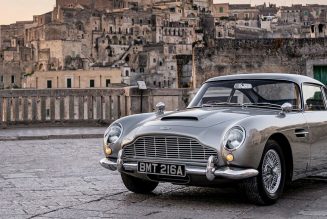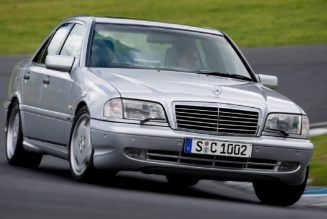For any given era and social niche, there are certain markers, certain cultural icons, that serve as symbolic bywords for that era and culture. Clothing can easily become such a reference: bell-bottoms, backward clothes, flannel, JNCOs, skinny jeans—each has had its heyday. So, too, with cars, some icons standing in as rolling representations of their eras—Wolf of Wall Street, anyone? But what about what the cars roll on? Do the shoes make the car, too? In the case of “turbofan” wheels, at least, the answer is yes.
What Is a Turbofan?
Originating from the time when racing’s top levels were just beginning to figure out the “how” of creating downforce and minimizing aerodynamic lift in the 1970s, turbofan wheels were another step in that direction. Perhaps capturing that nascent but incomplete understanding is the name itself, derived from the structure of jet engines.
Typically, an early racing turbofan wheel was little more than a flat, round plate backed with vanes, bolted to the outside of the car’s wheel. The idea was that the flat outer surface produced less aerodynamic drag, while the vanes inside the wheel would still distribute ample cooling air over the brakes. There’s also some evidence that early turbofan pioneers were looking to improve underbody aero, too, though whether they hoped to use the wheel covers as dams to help air flow under the car, or sucker fans to extract air out from under the car, is unclear. It was all a dark art back then, anyway.
Today, turbofan wheels take many forms; some are integral designs with the function of the bolt-on turbofan forged right into the aluminum, others are still bolt-on, and still others use an integral design and the look of turbofans, but lack the internal structure to function as true turbofans—in fact, the latter category is by far the most common.


Turbofans on Production Cars
While turbofan wheels were made famous by legendary race cars of the late 1970s and early 1980s, there have been production cars built with turbofan-style wheels, including the Pontiac Turbo Trans Am, the fourth-generation Chevy Corvette, and the E34-series BMW M5, among others.
Of course, like any cultural phenomenon that grabs the attention and imagination of a large percentage of the populace, turbofan wheels have been taken too far at times, too. My 1994 Ford F-250’s OEM kick-on plastic wheel covers, for example, had a turbofan-style design, making them perhaps the only parts on the truck that were even aware of the concept of aerodynamics. They don’t look cool, either.


Turbofans on Modern Cars
The science of wheel aerodynamics has come a long way in the past 30 years. Most new cars in some way manipulate the air that flows over and through the wheels, whether it’s to make the vehicle more aerodynamically efficient for better gas mileage in standard passenger cars, hybrids, and EVs, or to improve downforce or brake cooling for performance cars. Most often, the over-wheel airflow is handled by a concert of vents and flaps in the front bumper cover, front fender, and the rear bumper/fender/diffuser complex, with the wheel-face design itself playing a smaller role.
While modern production cars don’t often lean on the turbofan aesthetic, it lives on in the aftermarket, and in enthusiast communities shaped by the motorsports history and iconic looks of the cars that wore them originally. Ken Block’s Gymkhana 6 car, for example, a 2015 Ford Fiesta ST rallycross car, wore turbofans on the front wheels—but not on the back. Block’s Ford Escort RS Cosworth, aka “Cossie V2,” also wears turbofan wheels, alternately pictured with a matching set of four classic turbofans, or with a set of black classic turbofans up front, and a set of white fan-style five-spokes on the rear axle.
Porsche’s own re-born 935 (many regard the original as the originator of the turbofan wheel) sports a full set of classic-style turbofan wheels.
Regardless of their dubious efficacy, or the aerodynamic advances made in the decades since their arrival, turbofan wheels remain a touchstone of automotive style, and markers of an era when pushing the limits of what was possible meant exploring the unknown and even the unlikely in search of speed and victory—and, let’s be real, they just look cool as hell.
Turbofan Wheel Quick Facts
- Born of 1970s and 1980s race cars
- Intended to aid aerodynamics as well as manage brake temperatures
- Made in many different styles
- Still popular with enthusiasts
- Available in the aftermarket
- Iconic emblem of an era to a certain populace of automotive and racing enthusiasts
The post Turbofan Wheels: The History and Appeal of These Awesome Rims appeared first on MotorTrend.










